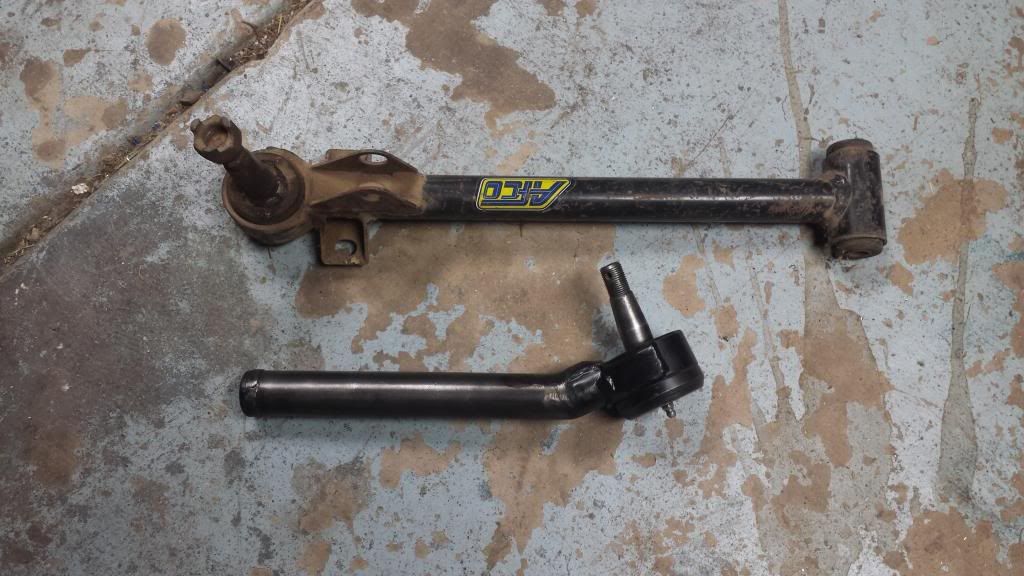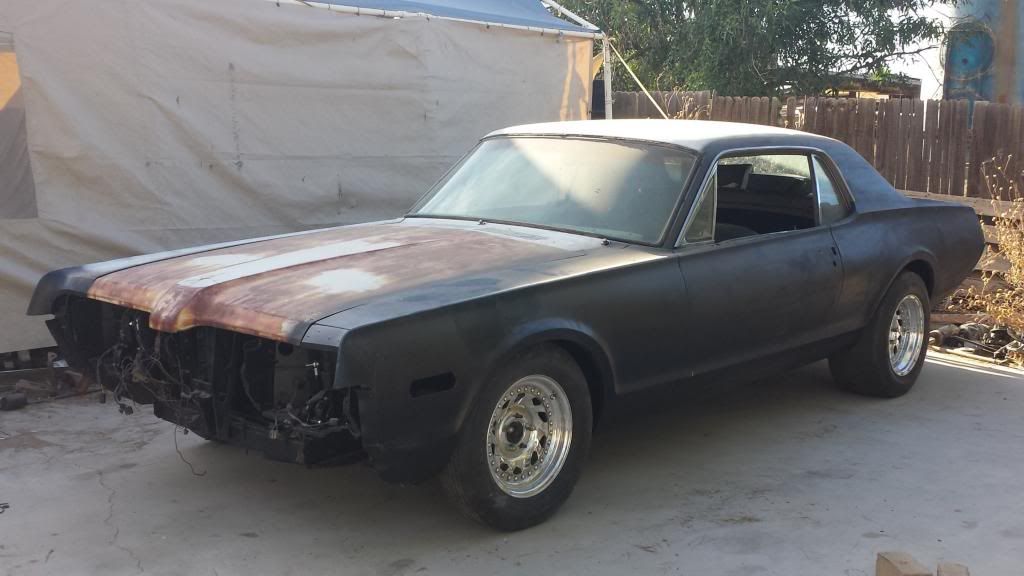I also made some time today to convert my steering column over from the stock rag joint, to a setup that will accept a u-joint. Grand total was a whopping $4 for the bearing, plus whatever you would pay for about 6" of 3/4" steel shaft (I got mine from work). I called all the rack retrofit companies to see how much they’d sell me just the bearing adapter for, and the lowest price was $60 from Randall’s, lol.
Anyhow, on to the pictures as usual =p.
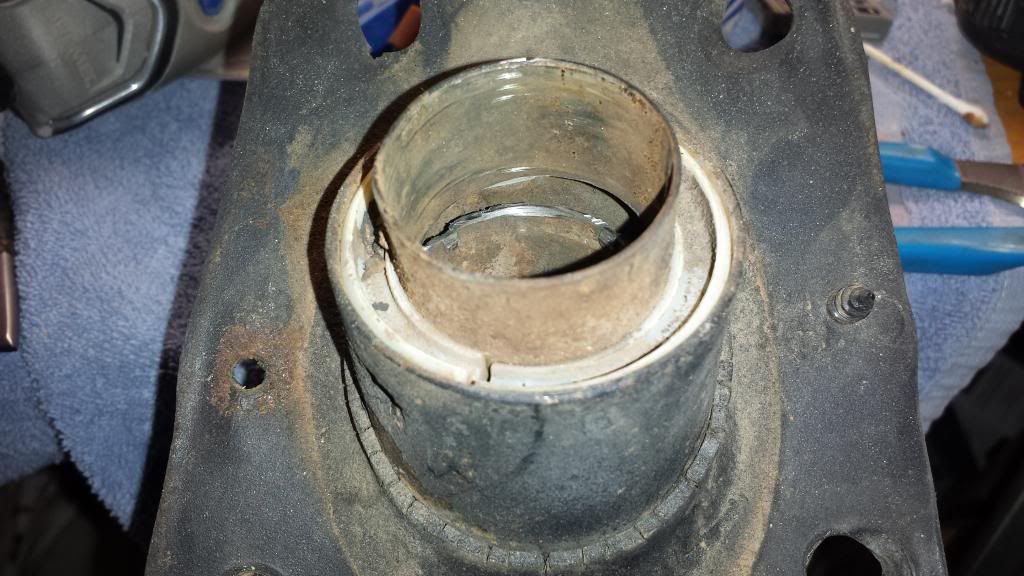
This is the engine compartment end of a factory 1968 Mustang/Cougar steering column, with the hollow rag joint shaft pulled out (it’s a friction fit to the steering column shaft on the inside). Basically the idea is to cut the inside column housing down low enough where we can press a bearing into the outer housing.
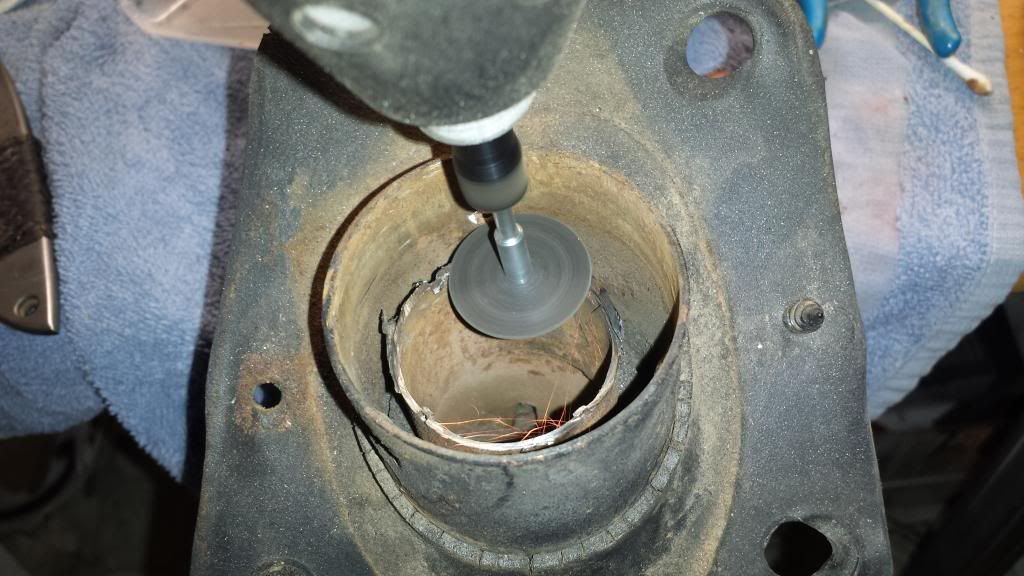
Here you can see me cutting it out with a dremel tool and a cutoff wheel. The entire cutting process took less than two minutes total.
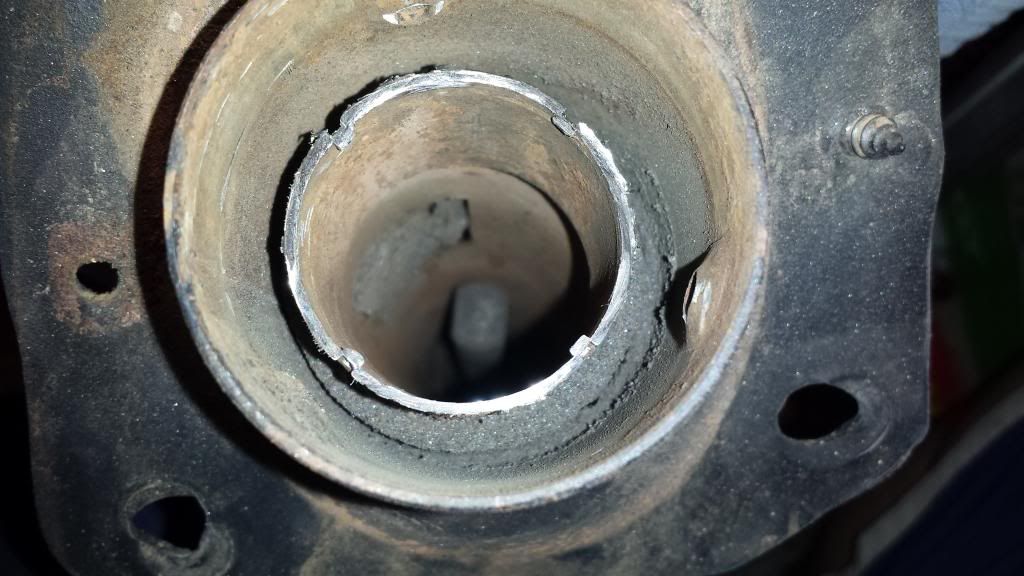
Here’s the inner housing cut out and removed. You can also see the male end of the steering shaft inside the column below. I used another of these shafts that I got from work to make my u-joint adapter, but you could easily use any piece of 3/4" diameter steel and do the same thing…you’d just have to grind the 3/4" DD into it to mate with the u-joint.
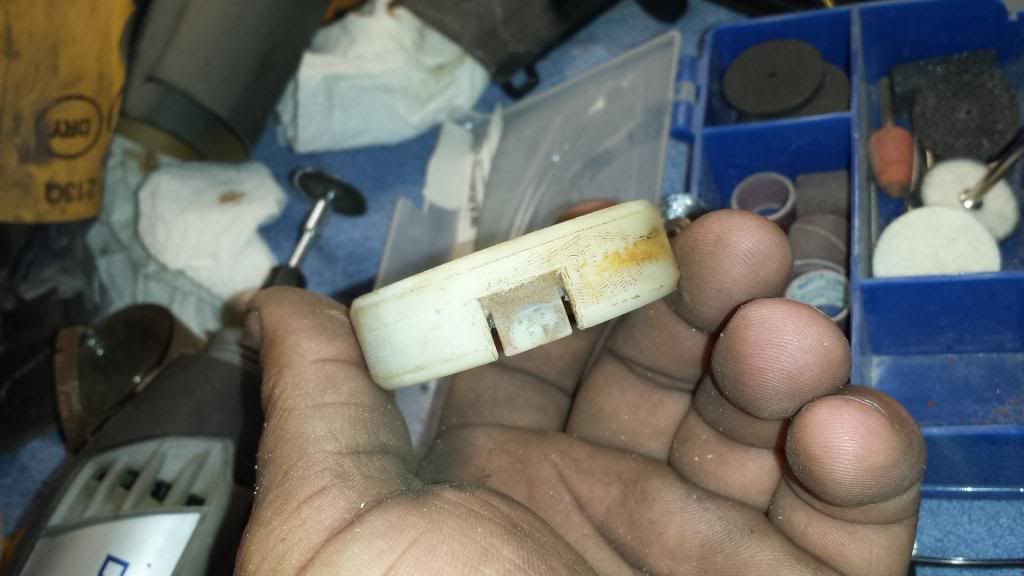


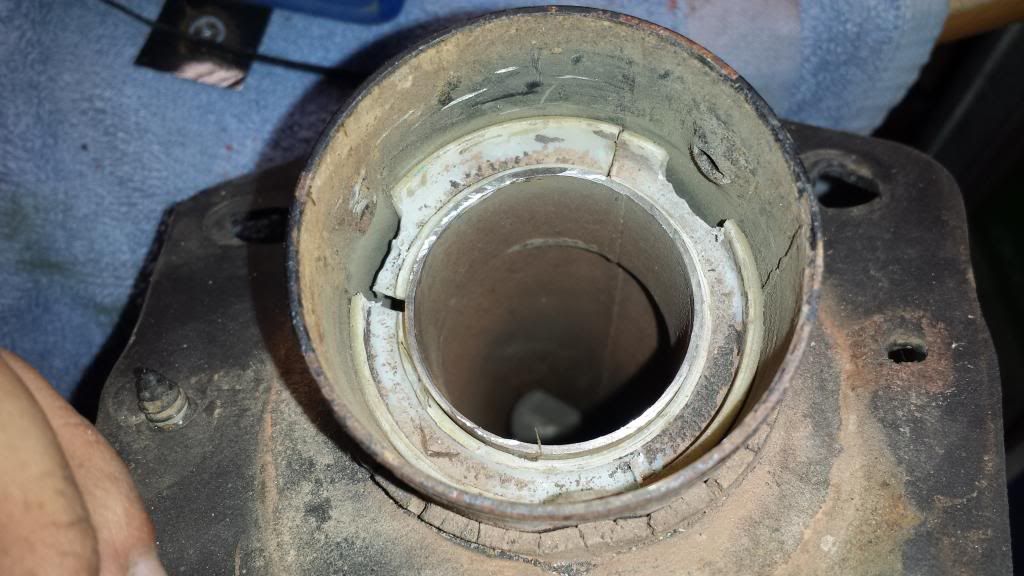
If you look at the first picture in this post, you can see this white spacer in the factory original column. Its purpose is to center the inner housing to the outer housing. Due to the way the column is built, we will still need a spacer for this purpose. I would have preferred to use 1/4" keyway stock for this (three small pieces pressed in would center the inner housing), but I didn’t have any on hand and reusing this spacer wasn’t too difficult (though I did crack it lol). Basically you just have to extend the indentations the factory put there to clear the set screw bosses as I illustrated in the pictures. After that, tap it (more gently than I did!) back in, and you’re all done.
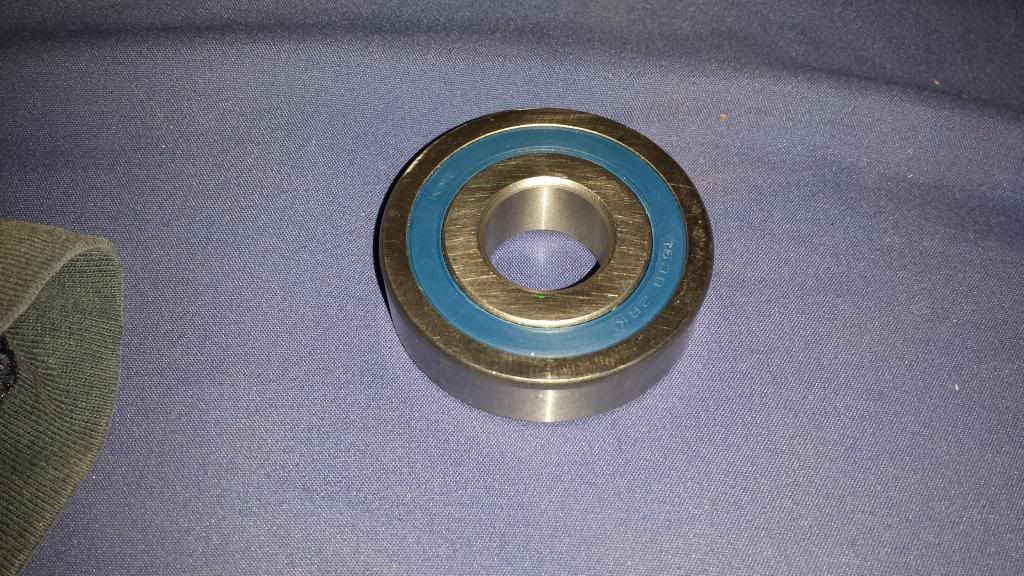
Here is the bearing I ordered. It’s 2" OD, 3/4" ID, and 9/16" thick. I used the thickness to determine how deeply I cut the factory inner column housing. Basically you want the centerline of the bearing to end up just a bit deeper than the centerline of the set screws. The outer housing is 2.10" ID, but those set screw bosses are a bit under the 2" that we need to fit our bearing. More on how to deal with that in a bit though.

These are both of the pieces that make up a factory steering column shaft. The threaded end of the solid shaft (this one is extra…there is still one in my column) bolts your steering wheel on, while the 3/4" DD end slides a few inches into the end opposite the rag joint on the hollow tube. This is what provides the ability for the steering shaft to collapse instead of spear you in the chest in the event of a head on collision. The way I adapted mine, this functionality is retained. Basically you need to cut down the hollow tube (after you cut it you can pitch the rag joint end if you like), then cut down the 3/4’ DD end of the shaft as well. As I’ve mentioned above, if you don’t have a shaft, you can use any piece of 3/4" OD steel…you’ll just have to grind in your 3/4" DD flats to mate with your u-joint.

Here are the pieces cut. You can see I cut off the rag joint end, and I also cut the threaded part for the steering wheel off of the solid shaft. The measurements here are semi important, as there’s a few key things you have to do to make it fit. I’ll explain more as we go through the rest of the pictures.
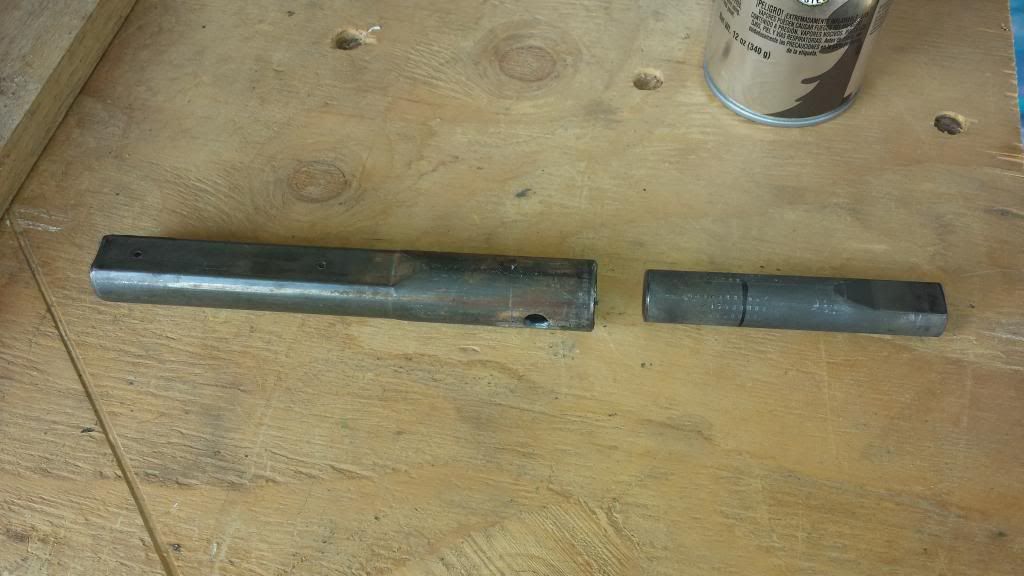
Here’s the two pieces you need to use. If you look at the solid piece, you’ll see a black line drawn on it. That is how far it needs inserted into the hollow tube so that the 3/4" DD end terminates a proper distance out of the column. The hollow tube needed cut a certain length in order to slip onto the solid shaft in the column, yet still provide the collapsing functionality. In addition, once you weld it, the hollow shaft needs to be far enough into the column not to interfere with the bearing placement.

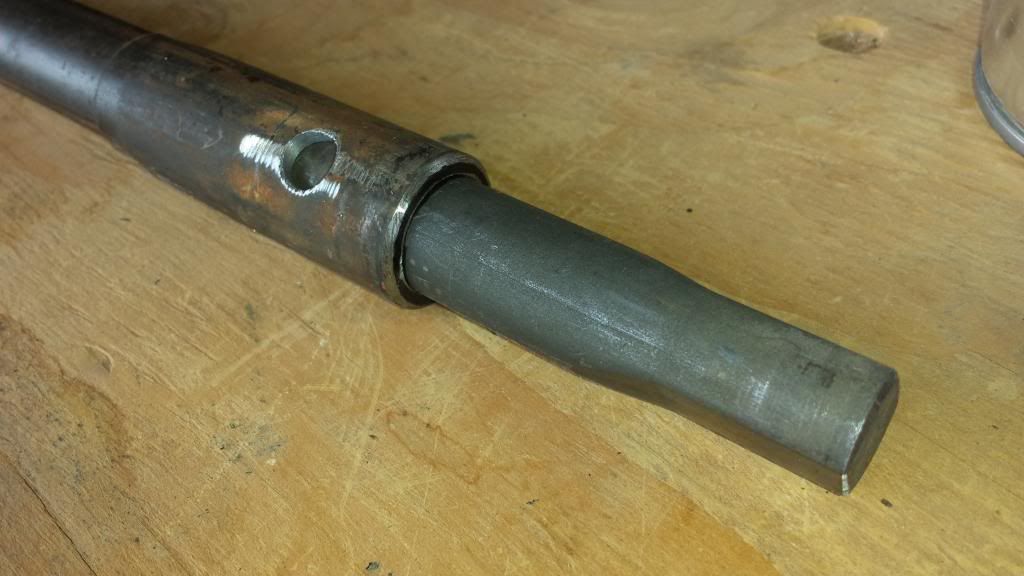
Here’s the pieces fit together. You can see I’ve also drilled out the hollow tube to allow for two rosette welds. A bit of extra weld surface area is never a bad thing.

All welded up.

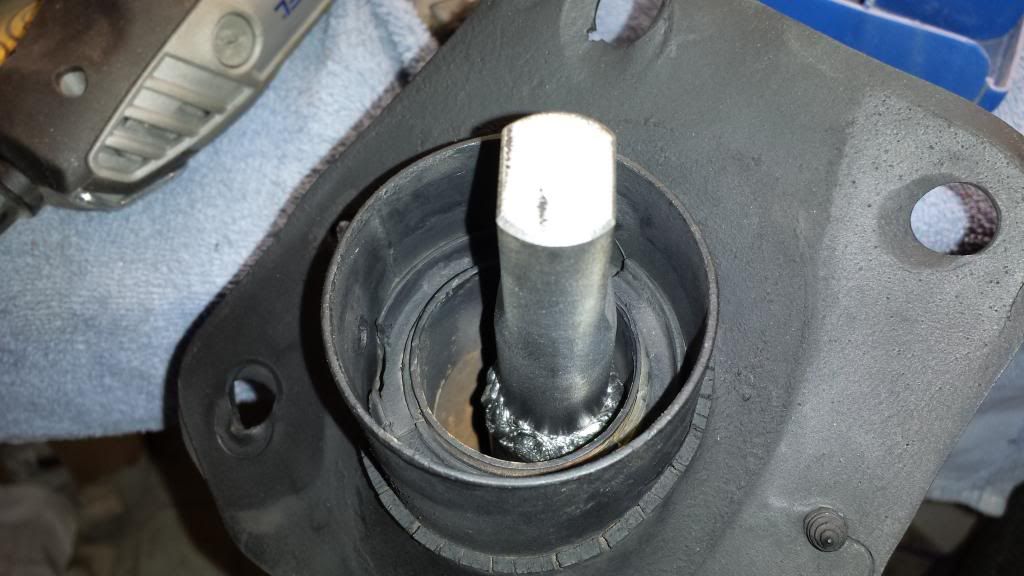
Here you can see the column shaft more clearly. Also pictured is the newly made adapter inserted into the housing (and over the column shaft a couple inches). As you can see the weld is below the level where the bearing will sit. This is a pretty simple, yet critical thing to overlook (I almost did myself) lol.
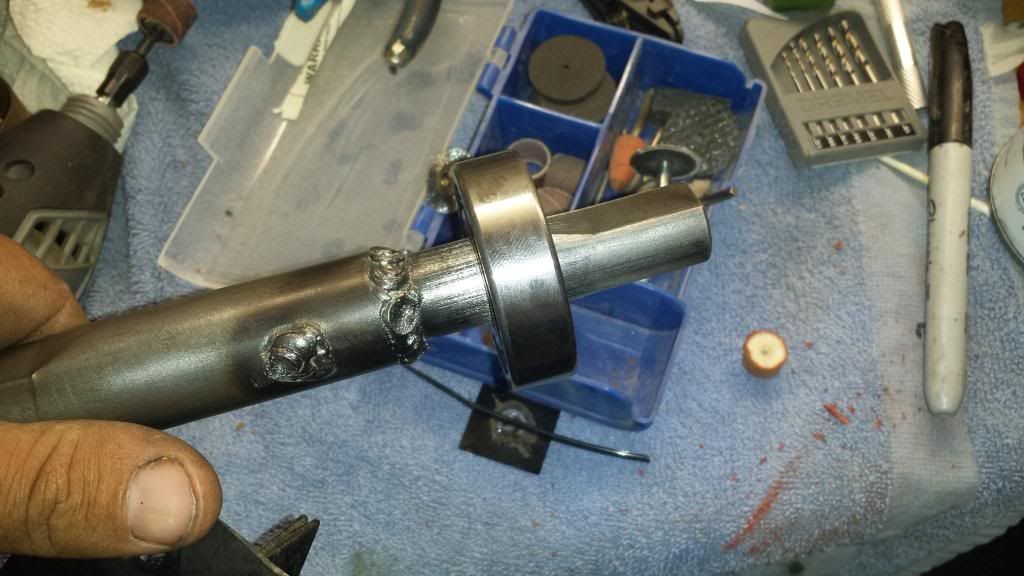
This is the bearing pressed on the shaft to the correct depth.
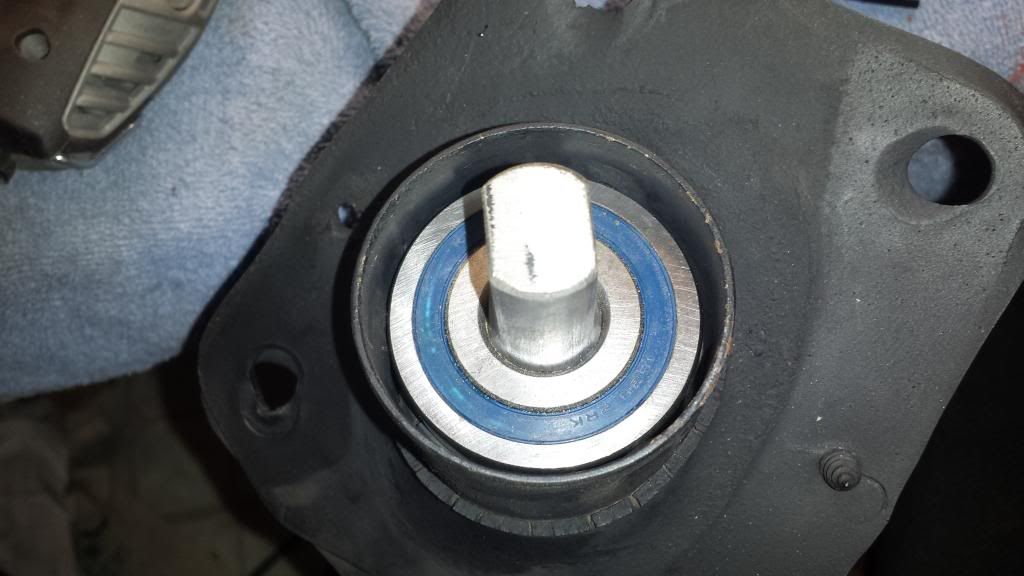
All done. You cant see it, but in order to get things to fit properly without major pressure on the bearing shell, I used my dremel with a small sanding drum, and tuned the set screw bosses carefully until the bearing was a tight press fit. Basically, I used a small rubber mallet and a socket to tap on the bearing. If it didn’t start with a solid tap, I’d sand a bit…then try again. Once it started, I simply tapped it in the rest of the way, alternating between the bearing and the shaft to ensure the spacial relationship between the two remained as I’d designed it.
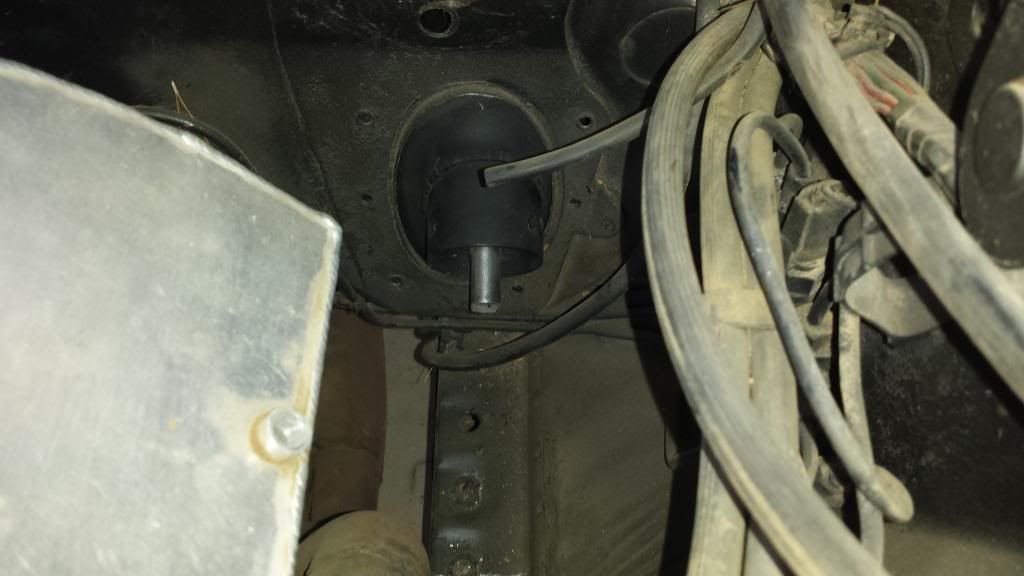
Here’s the setup bolted in the car. Nice and clean, with just enough extended to comfortably get a u-joint on without a struggle…without getting too close to the frame rail.
More to come as I get it done =p.













